Search Results for 'Peter Greene'
9 results found.
St Patrick’s Band, the early days
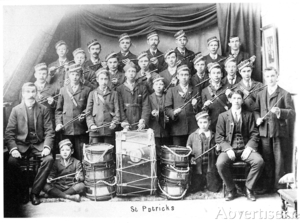
One of the most enduring of Galway's institutions is this band which has given pleasure to its own members and countless thousands of members of the public since it was formed in Forster Street in 1896. Thanks to dedicated leaders and teachers, this group of musicians continues to entertain. The founders were Peter Rabbitt, a Forster Street publican and grocer, Paddy Walsh, the station master and Michael Spelman of Moon’s staff.
The Fishmarket
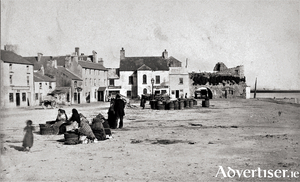
The village of Claddagh was a unique collection of thatched cottages arranged in a very random fashion, a place apart, occupied by a few thousand souls. They had their own customs, spoke mainly in Irish, intermarried, elected their own king and had a code of laws unique to the village. Virtually the entire male population was involved in fishing, but when they landed their catch, the women took over and they were the ones who went out and sold the product.
Pearse Stadium, Páirc an Phiarsaigh
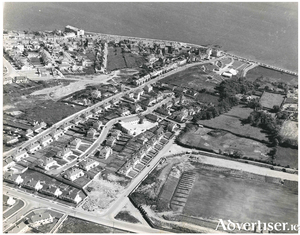
Sixty six years ago this week, on June 16 1957, Pearse Stadium opened.
McDonagh’s, a Galway treasure
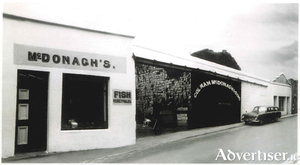
Patrick McDonagh from Galway was born in 1817 and married Sarah Cooney. They had a son Michael who married Peggy Wallace in 1870, and they in turn had a son Colman in 1875. He had a habit of whispering in people's ears and so became known as ‘Cogar’. In 1902, he moved from Carraroe to Galway and rented stores at the back of the Spanish Arch from Peter Greene. From there, he began to sell coal, carrying it on a horse and cart.
Galway Swimming Club, a brief history
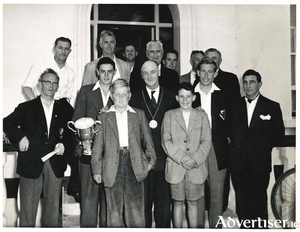
Ninety years ago, on August 2, 1931, the world famous long-distance swimmer, Miss Mercedes Gleitz, attempted to swim from the Aran Islands to Salthill. She did in fact manage to swim from Inis Meán to Spiddal in 18 hours 43 minutes, a distance of 18 miles as the crow flies, but it was estimated that with currents, etc, she covered a distance of nearly 30 miles. Two days later she gave a swimming demonstration in Salthill and presented a cup to the Chamber of Commerce to be presented to the school in the county which presented the greatest number of swimmers in relation to its student numbers. She stimulated a lot of interest in the sport, which had received a terrific boost just a few months before with the formation of two clubs, Blackrock Swimming Club and Galway Swimming Club. This guaranteed competition between the clubs and quickly helped raise standards.
A view from the rear of the Spanish Arch
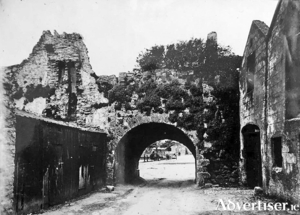
The Spanish Arch was not part of the original city walls but was built in 1584 as a measure to protect the city’s quays. It was originally known as Ceann an Bhalla or The Head of the Wall, a fortification that extended from Martin’s Tower to the river. Then in the 18th century, the Eyre family built Long Walk as an extension of the quays and a breakwater to construct a mud berth. A number of arches were constructed to allow access from the town to the new quay but unfortunately, an earthquake that occurred in Lisbon in 1755 resulted in a tsunami that destroyed some of these arches. In olden times, ships would have moored here unloading their cargo of Spanish wines and foodstuffs such as olive oil, spices, tea, coffee, and cocoa. Later, these ships would have been replaced by Aran fishing boats unloading and selling their wares.
The Galway sword and mace
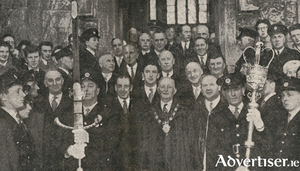
The Galway civic sword and mace are among the finest specimens of municipal corporation insignia in Ireland; the sword is particularly noteworthy and can be compared with the best of civic swords in these islands. Swords and maces were first carried by the king’s servants as symbols of the authority of the king himself. As time went on, the mayors and bailiffs of towns acquired swords and maces of their own, some following charter grants, others by mere assumption without specific authority. These were usually borne before the dignitaries concerned when they went in procession or were actively displayed when they acted otherwise in their official capacity. Maces, which were originally weapons, are staves of authority. Swords symbolise the legitimate use of force.
A brief history of Galway trams and buses
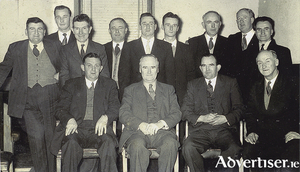
An entrepreneur named Mr Berry was probably one of the first people to organise buses in Galway. He had over a dozen horse drawn vehicles that plied regularly between Eyre Square and the Eglinton Hotel. The fare was one penny. Each vehicle was marked to carry a certain number of people and the police were vigilant to see that there was no overloading. In 1868 he bought a new bus that was allowed to carry inside and outside passengers. This could travel on longer excursions, to Barna and Oughterard, etc, but an accident on Knockbane Hill seriously affected his business.
Peter Greene, volunteer and mayor of Galway
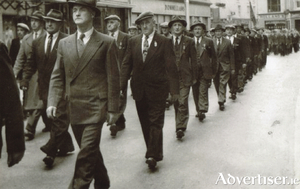
Peter Greene was born in Galway city in 1895, the youngest child of Colman Greene from Carna and Julia McGrath from Newcastle. He was educated in the ‘Pres’ and the ‘Mon’, where his teacher Brother Ambrose was a major influence; “Boys, I hope none of you will ever wear the red coat.”

